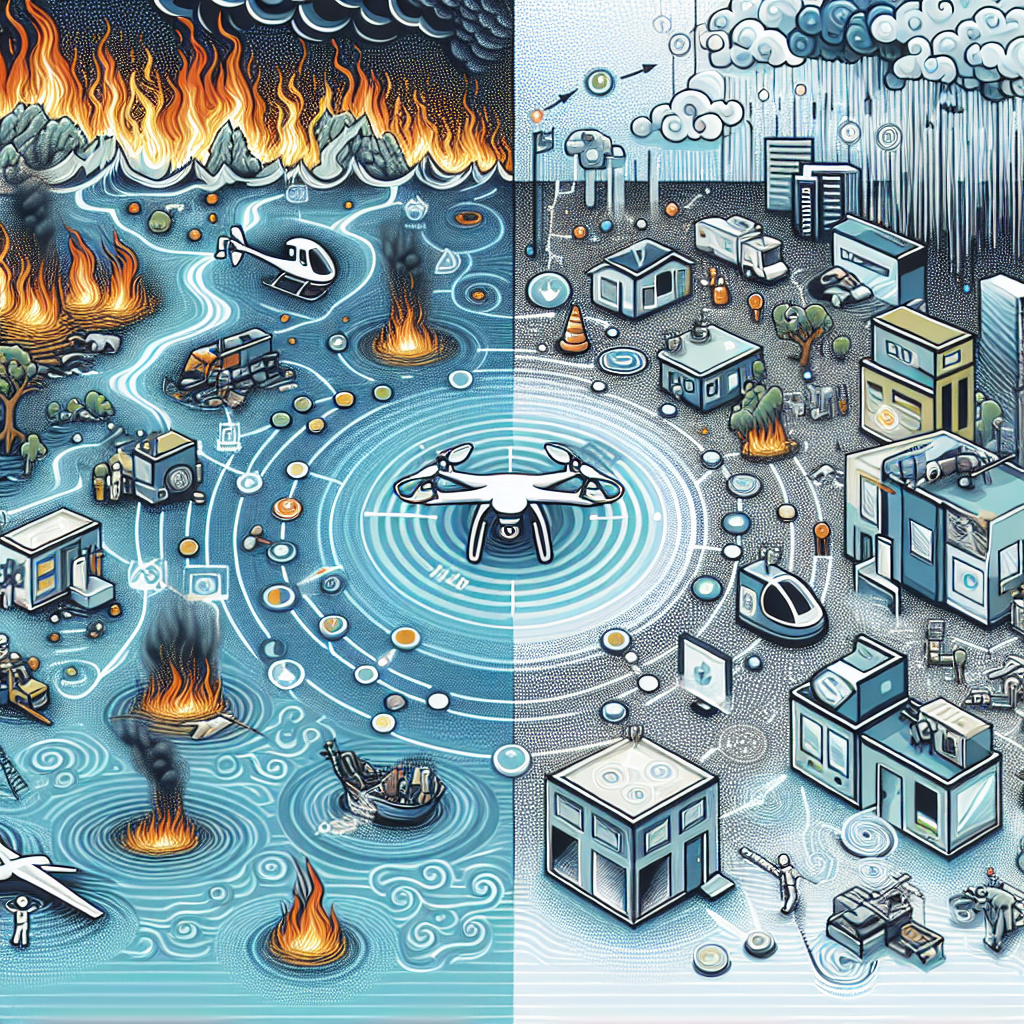In recent years, artificial intelligence (AI) has played an increasingly important role in disaster response planning. From predicting natural disasters to coordinating emergency response efforts, AI technologies have the potential to greatly enhance the efficiency and effectiveness of disaster response operations.
One of the key ways in which AI is being utilized in disaster response planning is through predictive analytics. By analyzing vast amounts of data from sources such as weather patterns, seismic activity, and historical disaster records, AI algorithms can help predict when and where disasters are likely to occur. This can enable authorities to take proactive measures to mitigate the impact of disasters, such as evacuating at-risk populations or reinforcing critical infrastructure.
AI technologies are also being used to improve communication and coordination during disaster response operations. For example, AI-powered chatbots can provide real-time updates and information to affected populations, helping to reduce confusion and ensure that people have the information they need to stay safe. AI algorithms can also analyze social media posts and other online data to identify areas where help is needed most urgently, allowing emergency responders to prioritize their efforts more effectively.
In addition to predictive analytics and communication, AI technologies are also being used to assist with damage assessment and recovery efforts following a disaster. For example, drones equipped with AI-powered sensors can quickly survey affected areas and create detailed maps of the damage, helping authorities to prioritize their response efforts and allocate resources more efficiently. AI algorithms can also analyze satellite imagery to identify areas where infrastructure has been damaged, allowing for more targeted and effective repair and reconstruction efforts.
Overall, the role of AI deployment in disaster response planning is rapidly expanding, with new technologies and applications being developed all the time. By harnessing the power of AI, emergency responders can better prepare for and respond to disasters, ultimately saving lives and reducing the impact of these devastating events.
FAQs:
Q: How does AI help predict natural disasters?
A: AI algorithms analyze data from various sources, such as weather patterns and seismic activity, to identify patterns and trends that may indicate an increased risk of a natural disaster. By analyzing this data, AI can help predict when and where disasters are likely to occur, allowing authorities to take proactive measures to mitigate their impact.
Q: How can AI assist with communication during disaster response operations?
A: AI-powered chatbots can provide real-time updates and information to affected populations, helping to reduce confusion and ensure that people have the information they need to stay safe. AI algorithms can also analyze social media posts and other online data to identify areas where help is needed most urgently, allowing emergency responders to prioritize their efforts more effectively.
Q: What role does AI play in damage assessment and recovery efforts following a disaster?
A: AI technologies, such as drones equipped with AI-powered sensors, can quickly survey affected areas and create detailed maps of the damage. This information helps authorities to prioritize their response efforts and allocate resources more efficiently. AI algorithms can also analyze satellite imagery to identify areas where infrastructure has been damaged, allowing for more targeted and effective repair and reconstruction efforts.

